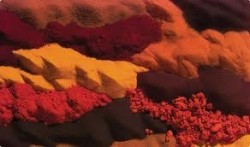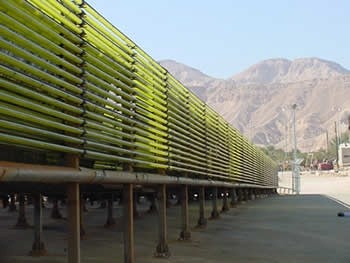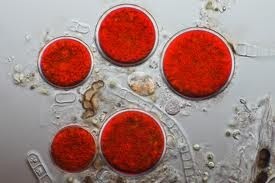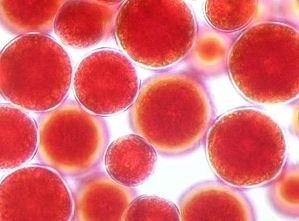DSM introduces new astaxanthin form, responds to critics of its 'nature-identical' approach

The natural vs synthetic flames were recently fanned by companies supplying astaxanthin sourced from algae that announced plans to form an association to highlight how their ingredients differ from synthetic suppliers. DSM has responded that its ingredient has a long history of safety and has human clinical data to back up bioavailability claims of it free form of astaxanthin.
"DSM’s product portfolio includes both naturally sourced and nature-identical nutritional ingredients. We invest in the development, manufacture and marketing of naturally sourced, as well as nature identical nutrients and believe in providing our customers and their consumers a choice,” DSM said in a statement.
About half of the ingredients DSM supplies are synthetic in origin, including AstaSana and ResVida, DSM’s nature-identical form of resveratrol. Among the naturally-sourced ingredients DSM supplies include PUFAs, lutein, beta-carotene and oat beta-glucan.
Insufficient data in paper
Three suppliers of natural astaxanthin sourced from algae recently announced plans to form an organization called the Natural Astaxanthin Association. In that announcement, the group pointed to a scientific paper that it claims highlights the advantages of natural vs synthetic, including higher antioxidant activity.
“In that paper they do show that based on the in vitro studies the natural astaxanthin may have higher antioxidant activity than the synthetic astaxanthin they used,” Deshanie Rai, PhD, senior scientific leader at DSM Nutrition and Health, told NutraIngredients-USA.
“But there are a couple of major limitations. We don’t know what form of synthetic astaxanthin they used, so we don’t know how that data relates to AstaSana. And this is in vitro data, which is not reflective of what is happening in the human body,”she said.
Rai said in vitro assays are typically used in preliminary studies of an ingredient’s activity, but are not usually used in an attempt to make a direct correlation to activity within human biological systems. The information gleaned from the in vitro tests was quoted by the natural astaxanthin camp to build up a case for much higher activity for the natural form via higher measured ORAC values, meaning much higher dosages of the synthetic would be called for to achieve the same effect.
“ORAC value is really questionable in the minds of the scientific community. (Antioxidant activity) is best measured in the physiological setting. We can substantiate that our astaxanthin is bioavailable,” Rai said.
Free vs esterifed
Another of the differences cited by the natural producers is that astaxanthin from algae is esterified, whereas the synthetic form is not. The key point is how the ingredient is utilized in the body’s tissues, DSM asserts. It’s point of view, supported by extensive scientific literature, is that it is well-documented that nature-identical astaxanthin is bioavailable. Whether astaxanthin is made available for human consumption in free or esterified form, only the free form is found in human blood after supplementation, DSM says. That means the esterified astaxanthin, although sourced via microalgae, is also de-esterified into the free form in the gastrointestinal tract. This observation is supported by scientific data which have reported that in humans, the esterified form of astaxanthin has a lower bioavailability than the free form.
“When you look at the clinical studies done in humans the free form is what is utilized and needed by the body to perform its function,” Rai said.
DSM notes that nature-identical nutritional ingredients have a long history of use and can offer distinctive benefits. For example, nature-identical vitamins and micronutrients make it possible to nourish a large part of population who otherwise would not have access to them, resulting in serious health and socio-economic consequences. Nature-identical Vitamin A, C and D are routinely found in today’s food supply chain worldwide and support the health and well-being of tens of millions of consumers.
NDI issue
Another bone of contention between the natural vs synthetic forms of astaxanthin is the regulatory status of the ingredients. The three suppliers that formed the association—Cyanotech, Fuji and AlgaTehcnologies—have filed NDI notifications on their ingredients. DSM’s ingredient has gone through different process, via a food color additive petition that was approved in 1995. DSM contends this is higher safety bar to clear, and the relatively long history of use without adverse events to report is further proof the ingredient is safe.
For Georges Bergen, senior manager of regulatory affairs for DSM, this is an important distinction.
“The color additive process is an approval whereas an NDI is notification that a given manufacturer intends to bring an ingredient to market. For our product, the agency had to conduct a review of the data and make an actual determination that it is safe,” he said.
New form
The new 10% fluid form, which is made up of cystrals of the carotenoid suspended in vegetate oil, will be suitable for soft gel products, said Anthony Palmieri, DSM’s head of marketing and development for the human nutrition segment. The first form of AstaSana to hit the market was a 5% form featuring DSM’s beadle technology that offers distinct advantages, Palmieri said.
“It’s a technology in which we encapsulate the carotenoid. we use it in our other carotenoids like lutein. It helps with the bioavailability and the stability of the product,” he said.
“There is also something called extrusion loss (active ingredients getting squeezed out in the manufacturing process). What sometimes formulators need to be concerned with is how much extrusion loss occurs. We are very confident that we have ver low extrusion loss in the beadle form,” Palmieri said.
















